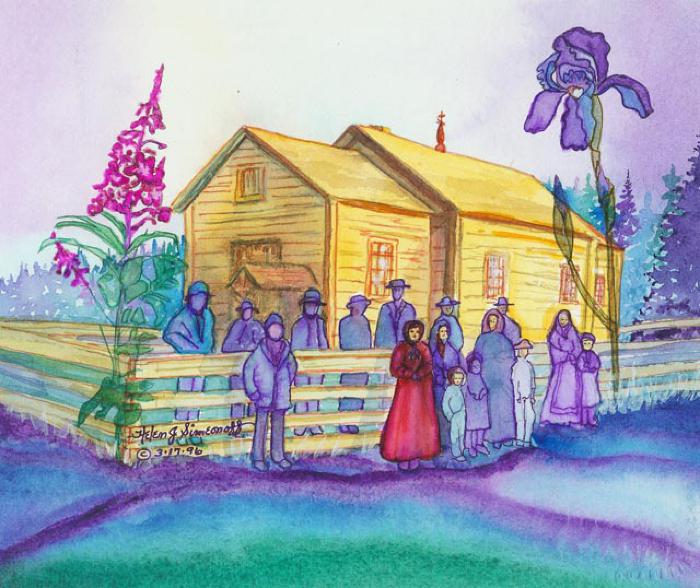Russian — Kasaakaq

The Russian era in Alaska began in the early eighteenth century when explorers and traders sailed east from Siberia in search of new lands and resources. In addition to a wealth of sea mammals, fish, and birds, Russian colonists came upon Native people: a source of skilled labor to exploit for harvesting this bounty. Over the following century, Russian traders conscripted Native workers to harvest everything from sea otters to ground squirrels, bird eggs, and plant foods. Although most of this work took place in and around Native settlements, Russian ships also transported workers far from home, as far south as California.
At Ft. Ross, an artel established on the northern coast of California in 1812, Alutiiq men and women were the main part of the Russian-led workforce that included Unangax̂ people, as well as local Kashaya and Miwok people. Alutiiq men hunted sea mammals for the Russian American Company and served as tradesmen. They worked as carpenters, sawyers, coopers, tanners, miners, fishermen, porters, and laborers, living in their own village adjacent to the fort’s stockade. Some brought their families, others raised families with local Native women. In 1820, there were 126 Kodiak Alutiiq people living at Fort Ross. Personnel lists name their home villages.
The Farallons, a desolate cluster of rocky volcanic islands at the entrance to San Francisco Bay, held another distant Russian outpost. Here, a Russian overseer managed Alutiiq and other Native workers who hunted seals and birds and gathered bird eggs from about 1811 to 1831. When the Russians left the California coast in 1841, most of the Alutiiq workers returned to Alaska.
